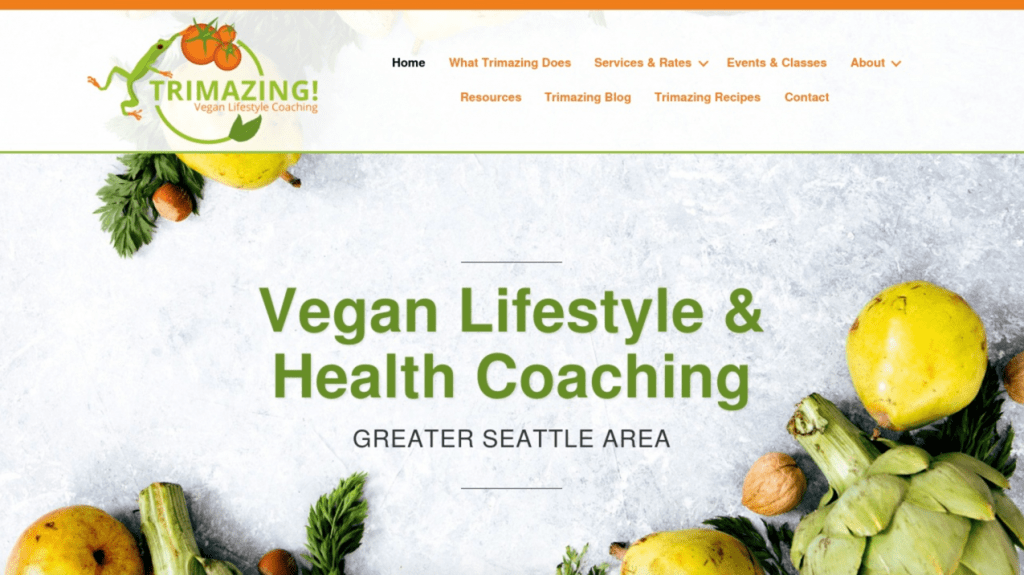Be Your Own Hero 72-Hour Emergency Kit Challenge
I had a whole different post all ready to go for today, with a plant-based recipe and zero waste tips (awwww, I know), but you’ll get it next week instead! In light of the past two weeks of the Seattle Snowpocalypse, I really want to talk about Emergency Preparedness for weather events and disasters instead, as I think it’s a really important topic while fresh in everyone’s minds.
2019 Seattle Snowpocalypse Timeline

Timeline and Accumulation, Our House, East of Seattle
For my followers outside of the Seattle area, snow accumulation probably doesn’t seem like a very big deal. But here in the Pacific Northwest, west of the Cascade mountain range, snow is a really rare and usually fleeting event. Snow in Seattle is usually mixed with rain, might accumulate 1/2 to 1 inch, at most, and closes school, if it’s present on a school morning. Rarely do we get any accumulation and it certainly doesn’t hang around for more than a day.

Unknown Source
And this is a good thing, as our topography really doesn’t bode well for snow or ice accumulation! There are not a lot of flat areas here, so even a dusting of snow or worse, ice, wrecks havoc on us. The combination of topography and snow being a rare and fleeting event means we don’t have a lot of infrastructure devoted to dealing with snow. Usually not a big deal. We shut down for a day or so, it all melts, and we’re good to go again.
But earlier this month, over a period of 10 days, we got upwards of 24 inches of snow in the Seattle area, and even more in some areas (and now there’s potentially more on the way this upcoming week!). This was the biggest snow event in our region in the past 50 years and the ranks 7th in terms of accumulation since 1894.
Snow surprised a lot of us on Super Bowl Sunday, 2019. What started out as rain turned into snow during the game and began accumulating as darkness fell. By morning we had six inches of snow. Unlike normal snow events, it remained cold, in the 20s, so the snow stuck around, not melting the next day like we’re used to. In fact, it remained cold all week and got icy. Schools closed for most of the week, only opening for a half day Friday. Garbage haulers were unable to navigate icy streets so many areas did not have garbage service that week.

Greg Gilbert, The Seattle Times
But a bigger storm was on the way. By midweek, a huge snowstorm was forecast to hit the region over the weekend bringing up to 21 inches of snow, although it would vary in depth throughout the area. For the first time in my memory, people were advised to stock up on groceries; in fact, the weather advisories actually included that message! All media sources warned of the storm and by Thursday, hordes of people jammed every grocery store in the region, stripping food from the shelves—it was incredible! Neighbors reported being unable to enter the Costco parking lot, no available carts at the grocery store, waiting in lines for half an hour or more to check out or to get gas. A state of emergency was declared by Washington state governor, Jay Inslee, and several cities and counties followed suit in preparation.

Digging out our driveway for the 5th time!
As luck would have it, I was home-bound as Alan took my SUV to the airport Monday afternoon! His car does horribly in the snow and ice and he needed to fly out of town for work. So I had no transportation to get to the store. Fortunately, we are well-stocked, and I really didn’t need to join the hordes. Alan did stop at a grocery store at 1 am Friday morning after his flight home landed in SeaTac, only to find empty shelves and stories from grocery store clerks of a run on the store earlier.
But by Friday morning, people were complaining that there was no snow, no emergency, and they’d wasted their time fighting the grocery store crowds to stock up. Friday afternoon, snow fell in Seattle but melted while other areas were hit hard, with up to a foot of snow. By Sunday morning, there were massive complaints from people who’d stocked up and had little snow. Facebook was abound with memes of people eating “snow toast,” trying to eat up all the bread they’d horded in their preparations for a non-existent snow emergency.
But then the rest of the storm hit Sunday evening and it didn’t let up until Tuesday. Seattle finally had it’s snow and areas east of the city were buried. By Valentine’s Day, Thursday, the National Guard deployed in areas east of Seattle to help emergency crews respond and help citizens dig out. We had 27 inches of snow at our house and over two days without power, cable, or internet.
Zero Waste
As of today, most people in my area haven’t had garbage picked up in three weeks. There are a lot of angry people, frustrated that garbage trucks haven’t come out the days after their garbage was supposed to be picked up. But that’s not how it works. Areas have assigned garbage days and if they are missed due to inclement weather or other unforeseen events that prevent garbage trucks to get to you, you wait until your next garbage day the following week and they will pick up double your allotted amount. Now two weeks out, people get to put out three times the normal pick up for no extra fee. That’s a lot of garbage to set out.

Our Garbage and Recycling
Being Zero Waste means that missed garbage pickups are no big deal, eliminating one worry during an emergency. We don’t have enough to fill our 20 gallon garbage can (the smallest we can get from our garbage hauler), not only for the past three weekly garbage pick up days, but since January 1st! I’m not bringing this up to brag, but to illustrate what an impact zero waste can have in decreasing stress in every day and extraordinary days, like during long-term weather events or disasters.
And that’s with our garbage being a little more than usual because we used up some emergency supplies that were stockpiled prior to our zero waste/plastic-free days, like the plastic Bob’s Red Mill flour bag, maple syrup, and soy milk. We’ll be replacing these with better options.
Emergency Preparedness
It was amazing to watch the frenzied scramble before this snowstorm. Unlike many disasters, like earthquakes, tornadoes, etc., this storm was forecast well in advance, giving people time to stock up and prepare. But what if it had been an earthquake instead? What if you had no warning at all? What if you had no chance to go get supplies (such as the case with me without transportation prior to the storm)? As a retired fire captain with a 20-year firefighting/paramedic career, I’d like to offer some perspective and guidance.
Many of us have heard that we need to have a 72-hour supply for emergencies. Why is this? Why 72 hours? And what is a 72-Hour Kit?

Fire crews working in snow. Photo by Cindy Thompson
The 72 hour rule comes from the probability that you may not get emergency assistance for the first 72 hours after an emergency/disaster. As a firefighter, I worked many natural disasters and I can tell you with certainty that the emergency response system is overwhelmed in the first hours and days of a disaster, no matter how well-staffed, equipped, or prepared. A single engine company call volume can quickly grow from an average 6-8 emergency calls per 24 hour shift to up to 20, with calls waiting that they can’t even get to. An emergency call an hour might not sound like much, but that includes getting to and from the scene, dealing with it, restocking, need for food, bathroom, and rest breaks, all under incredibly difficult circumstances of travel difficulties, extreme weather conditions and hazards, decreased resources, communication problems, and more. And this is just looking at fire personnel—the same holds true for police, medical, utility (power, gas, phone, etc.) responders, dispatch, garbage haulers, road crews, etc. Even if municipalities declare a state of emergency and request assistance from the National Guard, it can be many hours, even up to a day, before they arrive to help and are generally only deployed for 72 hours (there’s that 72-hour number again), unless extenuating circumstances allows their deployment to be extended. So this is a minimum, a probability, not a hard and fast rule. It may take less, it make take more, but it’s a starting point, and a very important one at that.

National Guard unit in my fire station during a Snow State of Emergency 2008. Photo by Cindy Thompson
So what’s in a 72-Hour Kit? Your kit needs to have enough water, food, tools, cooking supplies, clothing, toiletries, medications, etc. for your first 72 hours and includes money and important documents you may need in a hurry. You may be without utilities, including water, power, phone, or internet for this or an extended time. You might have to leave the area and have supplies ready to go at a moment’s notice. The Red Cross, FEMA, and other agencies have guides and lists available for what needs to go in your 72-Hour Kit, but I’d like to help make this process easier for you.
Be Your Own Hero – Build Your 72-Hour Kit Challenge

Emergency Water
I’ve taken the resources and materials from emergency preparedness agencies, my experience as a fire captain and putting my own 72-Hour Kit together for our household and created a Free 4-Week Challenge to help you put together your own 72-Hour Kit! Once you sign up, you will get an your first week of tasks to be completed and items to gather and/or purchase that upcoming week. Not only will you have a checklist, but I’m providing you with supplemental information and links to order materials to make your process easier. You’ll get a new task sheet and information each week. By the end of the month, you will have your own 72-Hour Kit for you and your whole household.
Here’s how to sign up:
Go to https://trimazing.com/be-your-own-hero-course-signup/ to enter into the challenge. You’ll get a confirmation email that you’ve signed up and are in the Be Your Own Hero 72-Hour Kit Challenge.
Then join the Trimazing! Vegan Lifestyle & Health Coaching Community on Facebook so you can let us know how you’re doing and what questions/issues are coming up. I’ll be there to answer them, as will other folks working on the same project. Together, we can all be stronger.
Are you ready to Be Your Own Hero?
Do you like this post? Please share....
[mashshare]
If you liked this post, you might like one of these:
Categories:

[Trī-māz-ing]
Cindy wants you to be Trimazing—three times better than amazing! After improving her health and fitness through plant-based nutrition, losing 60 pounds and becoming an adult-onset athlete, she retired from her 20-year firefighting career to help people just like you. She works with people and organizations so they can reach their health and wellness goals.
Cindy Thompson is a national board-certified Health and Wellness Coach, Lifestyle Medicine Coach, Master Vegan Lifestyle Coach and Educator, Fitness Nutrition Specialist, Behavior Change Specialist, and Fit2Thrive Firefighter Peer Fitness Trainer. She is a Food for Life Instructor with the Physicians Committee for Responsible Medicine, Rouxbe Plant-Based Professional, and Harvard Medical School Culinary Coach, teaching people how to prepare delicious, satisfying, and health-promoting meals.
She provides health and lifestyle coaching at Trimazing! Health & Lifestyle Coaching. Cindy can be reached at info@trimazing.com.
Subscribe to the Trimazing Blog
Receive occasional blog posts in your email inbox.
Subscribe to the Trimazing Blog
Receive occasional blog posts in your email inbox.



















